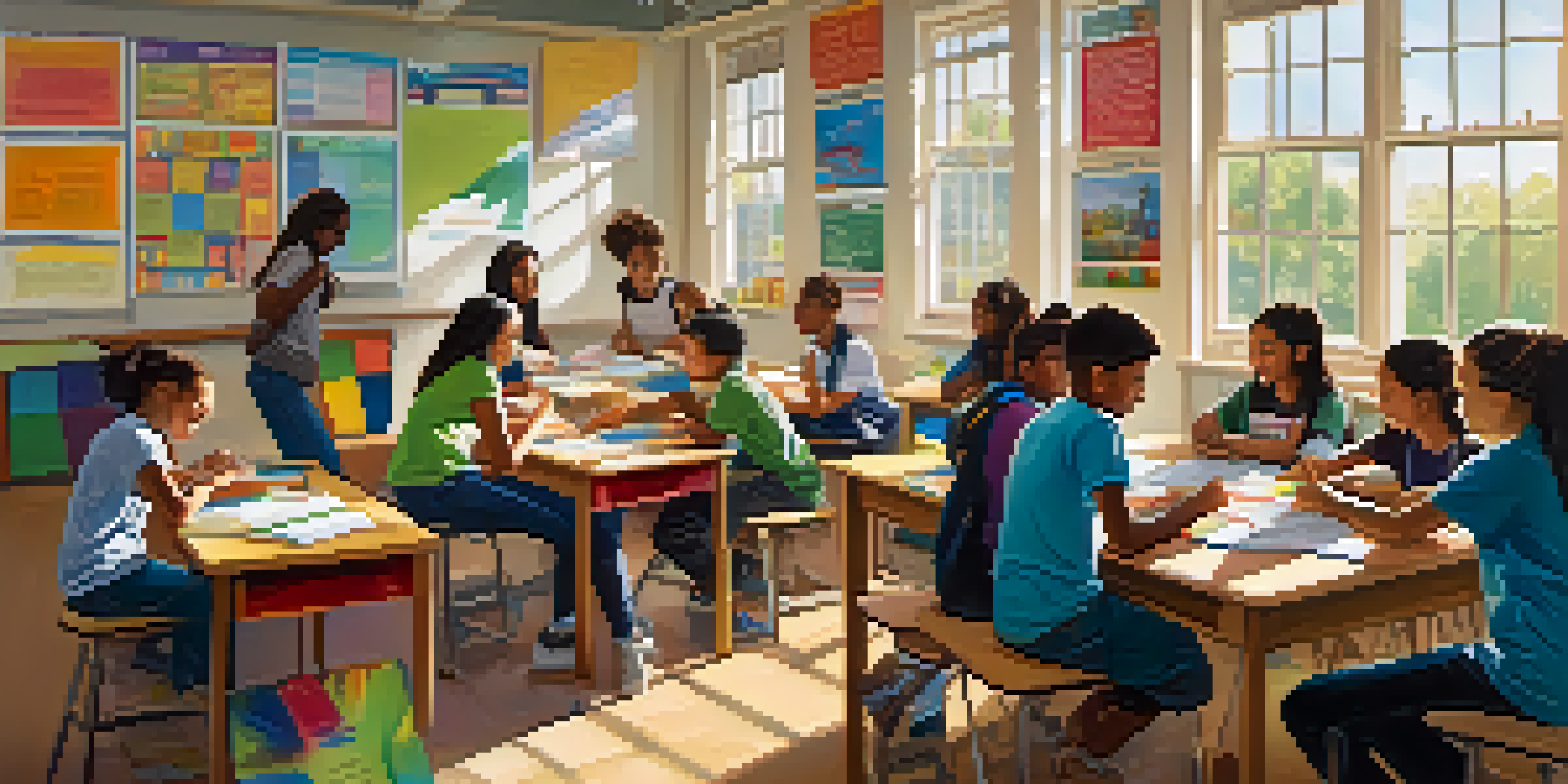Middle Schools in San Antonio: Bridging the Education Gap

Understanding the Education Gap in San Antonio
San Antonio has made significant strides in education, yet challenges remain. The education gap refers to the disparities in academic performance among students, often influenced by socioeconomic factors. This issue is particularly prominent in middle schools, where students transition from elementary learning to more complex subjects.
Education is the most powerful weapon which you can use to change the world.
Factors such as income level, access to resources, and parental involvement often play a pivotal role in this gap. Many students in under-resourced areas face obstacles that can hinder their academic success. It's essential to understand these challenges to create effective solutions.
Local schools are increasingly aware of these disparities and are implementing strategies to bridge the gap. By focusing on equity in education, San Antonio's middle schools aim to provide all students with the tools they need to succeed.
Innovative Programs Supporting Middle School Students
In response to the education gap, many middle schools in San Antonio have launched innovative programs. These initiatives often focus on enhancing student engagement and providing additional support to those in need. For instance, tutoring programs and after-school activities can make a significant difference in a student's academic journey.

One successful example is the implementation of mentorship programs, where older students guide younger ones. This not only helps with academics but also fosters a sense of community and belonging. Such programs encourage collaboration and can dramatically improve student outcomes.
Bridging the Education Gap
San Antonio faces an education gap influenced by socioeconomic factors, particularly impacting middle school students.
Moreover, schools are increasingly integrating technology into their curriculums. By utilizing educational software and online resources, educators can offer personalized learning experiences that cater to individual student needs, further bridging the educational divide.
Community Partnerships Enhancing Education
Community partnerships play a crucial role in bridging the education gap in San Antonio. Schools are collaborating with local organizations, businesses, and universities to provide students with additional resources and learning opportunities. These partnerships can lead to internships, workshops, and even scholarships, enriching the educational experience.
The function of education is to teach one to think intensively and to think critically. Intelligence plus character — that is the goal of true education.
For instance, local universities often provide tutoring and mentoring, while businesses may offer internships or job shadowing opportunities. Such collaborations not only enhance learning but also expose students to real-world experiences that can ignite their passions.
These community connections help create a support network for students and their families, making education a more communal effort. By working together, schools and communities can create a more inclusive and supportive environment for all students.
Culturally Relevant Curriculum in Middle Schools
A culturally relevant curriculum is vital for engaging diverse student populations in San Antonio. This approach recognizes and values students' cultural backgrounds, making learning more relatable. When students see themselves reflected in what they study, they're more likely to be engaged and motivated.
Middle schools are increasingly incorporating multicultural perspectives into their teaching materials. This not only enriches the curriculum but also promotes understanding and respect among students of different backgrounds. For example, literature classes might explore works by authors from various cultures, broadening students' horizons.
Innovative Support Programs
Middle schools are launching innovative programs, including mentorship and technology integration, to enhance student engagement and academic success.
Additionally, teachers are encouraged to use culturally responsive teaching strategies. This means adapting lesson plans to connect with students' experiences, making learning more meaningful. By fostering an inclusive environment, schools can help close the education gap.
The Role of Teachers in Bridging the Gap
Teachers are at the forefront of efforts to bridge the education gap in middle schools. Their dedication and adaptability are crucial in addressing the diverse needs of students. By tailoring their teaching methods and being responsive to student feedback, teachers can create a more effective learning environment.
Professional development programs are essential for equipping educators with the latest strategies. Workshops focusing on equity, inclusivity, and differentiated instruction empower teachers to meet the unique needs of their students. Such training can be instrumental in enhancing teaching effectiveness.
Moreover, creating strong relationships with students can significantly impact their academic success. When teachers invest time in understanding their students' backgrounds and challenges, they can provide better support and encouragement. This personal connection fosters a positive learning atmosphere.
Parental Involvement in Education
Parental involvement is a key factor in bridging the education gap at the middle school level. When parents engage with their children's education, it can lead to improved academic outcomes and overall well-being. Schools in San Antonio are finding innovative ways to encourage parental participation, creating a more supportive community.
Workshops and seminars aimed at parents can help them understand the educational system and how they can support their children. Topics might include effective study habits, communication with teachers, and navigating school resources. Empowering parents with knowledge can enhance their involvement.
Community and Parental Involvement
Strong community partnerships and parental involvement are crucial in creating a supportive educational environment for students.
Additionally, schools are fostering open lines of communication with families. Regular updates on student progress and opportunities for involvement help parents feel connected to their child's education. This partnership between parents and schools is crucial for student success.
Future Prospects for San Antonio Middle Schools
Looking ahead, the future of middle schools in San Antonio appears promising as efforts to bridge the education gap continue. With the commitment of educators, community partners, and families, there is a strong foundation for positive change. Ongoing investments in resources and programs will be vital to sustaining this momentum.
Emerging trends, such as increased emphasis on technology and personalized learning, are likely to shape the educational landscape. Schools will continue to evolve, adapting to the needs of their students and the community. This adaptability is crucial in addressing the unique challenges faced by middle school students.

As San Antonio moves forward, a collaborative approach will remain essential in closing the education gap. By prioritizing equity and inclusivity, middle schools can ensure that all students have the opportunity to reach their full potential.